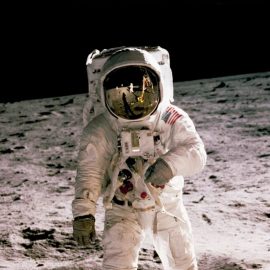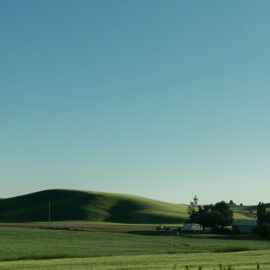

This article is an excerpt from the Shortform book guide to "Caste" by Isabel Wilkerson. Shortform has the world's best summaries and analyses of books you should be reading.
Like this article? Sign up for a free trial here .
What is the difference between race and caste? How do race and caste work together to segregate societies?
According to Isabel Wilkerson, race and caste are not synonyms. In her book Caste, she explains that race is the arbitrary manner of differentiating one group from another based on skin color. In contrast, caste is how we use that distinction to maintain division among groups and ascribe the appropriate lifestyles.
Continue reading for an in-depth discussion on race and caste.
Caste vs. Race
In her book Caste, Isabel Wilkerson argues that America’s current caste system is based on differences in people’s appearance; specifically, skin color. This arbitrary manner of differentiating one group from another is what developed the concept of race. Without it, race would not carry the importance it does today or even be something we assign meaning to.
According to Isabel Wilkerson, there is a big difference between race and caste. Race is an unwavering line drawn in the sand because it’s immediately noticeable. Skin color becomes the obvious, immediate cue that triggers ingrained stereotypes and assumptions about how different groups of people fit into society. Wilkerson argues that as these beliefs deepen, so do the expectations for what a certain group is capable of, where they should live, what they’re allowed to achieve, and what freedoms they can possess. These expectations get passed from generation to generation without question, enhancing social inequities and injustice for all future generations.
(Shortform note: Wilkerson doesn’t mention here that although caste systems are common in many societies around the world, very few of them use physical markers like skin color to divide people into different castes. Ethnicity, religion, and inherited occupations are far more common markers of social status in hierarchical societies. This means that the American caste system is one of the most inescapable—a person could theoretically change their religion, but they can’t change their skin color.)
Wilkerson believes the word “race” and the derivatives of “racism” and “racist” are so ingrained in our cultural vernacular that we may not understand the true nature of those words. Race originated as a means to differentiate dominant power from subordinate inferiority based on skin color, and over centuries, it has become a weighted term. But Wilkerson believes the meaning the term attempts to convey is arbitrary because the distinction is arbitrary.
(Shortform note: The arbitrary nature of race explains why, as we’ll see, American lawmakers have spent so much time debating exactly what constitutes membership of a particular race, as well as why those definitions have changed over time. Racial distinctions don’t reflect a stable, underlying reality—they’re constantly updated to support the dominant group’s interests.)
| Racial Categories Aren’t Biological Facts Wilkerson describes “race” as a social concept that loads centuries of acquired meaning onto otherwise neutral traits like skin color. On the other hand, many people believe that race is a biological fact because people of different races often have distinct genetic predispositions for certain diseases or health outcomes, such as high bone density or sickle cell anemia. However, according to biological anthropologist Alan Goodman, people who view race as a biological reality are confusing the socially-constructed concept of “race” with the very real concept of geographic origin. Goodman and Wilkerson agree that arbitrary racial labels lump everyone with dark skin and tightly curled hair into the “Black” category. However, people in this category have a wide array of geographic origins (meaning their ancestors lived in different places). According to Goodman, geographic origin is what actually determines someone’s biology. Take sickle cell anemia, for example: The gene variant that causes the disease is common in West Africa (as well as India, the Mediterranean, and the Middle East) but almost nonexistent in the rest of the African continent. That means that not all Black people have an increased risk for sickle cell anemia, and that not everyone who carries the gene for the disease falls under the “Black” label. In other words, race isn’t the salient factor in determining biological “facts” like disease predisposition—geography is. |
The Reality of Race
Wilkerson argues that race is a tool used to separate people and justify different standards of living: In the eyes of dominant-caste people, perpetuating the idea that people of a certain race are “different” or “lesser” justifies treating those people differently. In reality, people of different races aren’t that different at all. In fact, a study of human genomes 20 years ago showed that all humans are 99.9% the same genetically. Genetic scientists discovered that every person on Earth descended from a handful of tribes in Africa, and over 100,000 years, the different generations migrated out of Africa and into other lands. This means that the distinctions we hold as truth based on the artificial idea of race are a distortion of our true ancestry.
| Skin Color Is an Evolutionary Adaptation You may wonder why humans have such a wide variety of skin colors if we’re all genetically the same. Wilkerson doesn’t address this question, but research shows that skin color is determined by the presence of a pigment called melanin, which blocks the sun’s UV rays. These rays are beneficial in small quantities (for example, our bodies need UV exposure in order to produce enough vitamin D) but harmful in larger quantities. Over millions of years, ancient humans evolved to produce the perfect amount of melanin-based on where they lived. Darker-skinned people’s ancestors lived closer to the equator, where they were exposed to direct sunlight; as a result, they evolved to produce more melanin as a natural form of sunscreen. On the other hand, lighter-skinned people’s ancestors migrated away from the equator to places where the sunlight was weaker; they evolved to produce less melanin, which helped their bodies maximize what little sun exposure they got. Thus, skin color is merely an evolutionary adaptation, rather than a sign that different groups of people are fundamentally “different.” |
How Casteism Differs From Racism
Wilkerson believes that while race and caste are not synonyms, they support each other within American culture. Race is the physical evidence of difference and the set of meanings assigned to that evidence. Caste is how we organize that evidence to maintain division among groups and ascribe the appropriate lifestyles. Therefore, Wilkerson believes it would be more accurate to refer to someone who discriminates against another race as a casteist, not a racist. That’s because, according to the author, the definition of racism has changed over time.
Originally, racism signified one group that uses their social power to oppress another group based on race. However, Wilkerson argues that in the last century, racism has become synonymous with beliefs, actions, and character. Today, if you’re a racist, it means you hate people who are not like you and condone oppression. Wilkerson believes that this misunderstanding is why the dominant caste flinches at the term. The author argues that if racism were understood as a byproduct of casteism, society might actually be open to acknowledging racial problems.
(Shortform note: Wilkerson is right that dominant caste members often flinch at the term “racist.” For example, during a 2021 debate on voting restrictions that would primarily impact people of color, the Speaker of the Texas House of Representatives asked lawmakers not to use the word “racism” in their comments. However, despite this discomfort, scientific studies don’t support Wilkerson’s hope that eliminating the word “racism” will diffuse the conversation around race—in one study, researchers found that white participants felt threatened even by the term “diverse conversations.”)
According to Wilkerson, the only way that real equality and justice will happen in America is if we stop looking for the red flags of racism and start focusing on the mindsets and microaggressions that continue to hold the lowest caste in place. We must recognize our biases as elements of a caste because we all unconsciously participate in the American caste system, especially by simply accepting that this is “just the way things are.” Wilkerson urges us to stop believing that the racial hierarchy of our country is natural. We must accept people for who they are, rather than what we believe their physical features mandate.
| Are “Race” and “Caste” Really Different? To understand the difference between race and caste, it helps to understand how other scholars define “racism.” As Ijeoma Oluo describes in So You Want to Talk About Race, there are two culturally accepted definitions of racism. The first is personal (bias against a person based on their race), and the second is structural (racially biased power structures and institutions that discriminate against a particular racial group). Wilkerson argues that most people rely on the personal definition, while only social scientists tend to use the structural definition. Wilkerson’s solution to the confusion over how to define “racism” is to focus on caste, not race. However, her description of caste as the structure of American inequality sounds almost identical to the second (systemic) definition of racism. If this sounds confusing to you, you’re not alone: Multiple reviewers have questioned whether there’s a meaningful difference between discussing “casteism” and discussing “systemic racism.” They argue that Wilkerson’s distinction is arbitrary and weak. Other reviewers, however, argue that reframing the situation in terms of caste “neatly lift[s] the mind out of old ruts,” even if readers don’t fully buy into Wilkerson’s logic. The confusion about race and caste leads to a contradiction in terms of Wilkerson’s proposed solutions for racial inequality in the United States. By shifting the conversation to “caste,” Wilkerson seems to be arguing that we should refocus on the systems and structures that hold up racist beliefs, rather than those beliefs and labels themselves. However, the solutions that she proposes first in this section and again near the end of the book ignore those structures in favor of addressing individual racist mindsets, microaggressions, and personal assumptions about the nature of race in society. Ultimately, these solutions are still important (even if they’re not fully consistent with Wilkerson’s thesis) because to truly dismantle the caste system, we need to act on both a personal and systemic level. |

———End of Preview———
Like what you just read? Read the rest of the world's best book summary and analysis of Isabel Wilkerson's "Caste" at Shortform .
Here's what you'll find in our full Caste summary :
- How a racial caste system exists in America today
- How caste systems around the world are detrimental to everyone
- How the infrastructure of the racial hierarchy can be traced back hundreds of years






